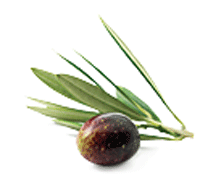Tuesday, December 1, 2009
Why Don't We Know About These?
Soap Nuts are fully sustainable, renewable, offer future forestation potential and are quite possibly the single most effective solution to reducing a huge range of pollutants on our stressed plannet. Mother Nature's gift of soap nuts has always provided us with truly green and exquisitely effective household cleaning and personal care .......Soap nuts are also a totally renewable resource. Each year brings a new soap nut harvest, and the trees have a very long lifespan. Most are exported form India, Nepal and Southern China.
Less than half of the Sapindus Mukorossi soap nuts (the most highy prized and valued of the many specias of soap berry trees) from the Sivalik Hills and Doon Valley regions fo the Himalayans are being harvested and used today. Most end up decomposing in the soils. This is a terrible waste of a valuable resource and economic stimulus for these regions.
Mukorossi soap berry trees may also be cultivatd across other vast regions of the world, typically those areas of highter elevation and relatively steep slopes. Mukorossi trees are extremely hardy, live an average of ninety years and are prolific fruit bearers. They produce fruits for roughly eighty of the ninety year lifespan. Many regions around the largest mountain ranges on nealy every continent presently have lands that provide us little environmental or ecological benefits. Many of these regions would be ideal area for the cultivation of Mukorossi soapberry trees.
Hence soap nut trees offer the world, forestation potential of many otherwise unproductive lands across the globe. They flourish in poor soil conditions and reduce erosion of valuable top soil. The forests of Mukorossi soap nut trees in Nepal and India are actuallly alien to those lands. They originated in what is now China and were brought to these regions for cultivation. With adequate demand there is no reason many other lands cannot be similarly cultivated and forested.
Less than half of the Sapindus Mukorossi soap nuts (the most highy prized and valued of the many specias of soap berry trees) from the Sivalik Hills and Doon Valley regions fo the Himalayans are being harvested and used today. Most end up decomposing in the soils. This is a terrible waste of a valuable resource and economic stimulus for these regions.
Mukorossi soap berry trees may also be cultivatd across other vast regions of the world, typically those areas of highter elevation and relatively steep slopes. Mukorossi trees are extremely hardy, live an average of ninety years and are prolific fruit bearers. They produce fruits for roughly eighty of the ninety year lifespan. Many regions around the largest mountain ranges on nealy every continent presently have lands that provide us little environmental or ecological benefits. Many of these regions would be ideal area for the cultivation of Mukorossi soapberry trees.
Hence soap nut trees offer the world, forestation potential of many otherwise unproductive lands across the globe. They flourish in poor soil conditions and reduce erosion of valuable top soil. The forests of Mukorossi soap nut trees in Nepal and India are actuallly alien to those lands. They originated in what is now China and were brought to these regions for cultivation. With adequate demand there is no reason many other lands cannot be similarly cultivated and forested.
Subscribe to:
Posts (Atom)


